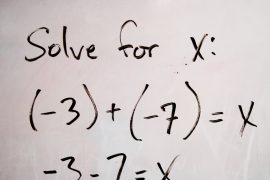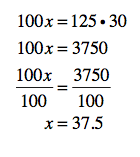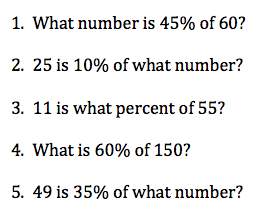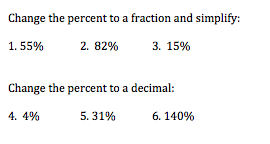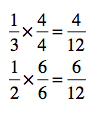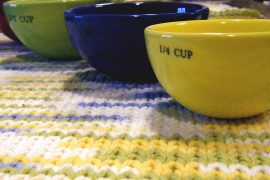No, I did not have the flu. No, I did not fall off the face of the earth. No, I did not abandon my math-writing career in favor of tightrope walking at the circus. In fact, I have simply been overworked. Apparently math writers are hard to find, and with the Common Core State Standards Initiative coming down the pike, I’ve had more work than I can handle. That’s a good thing — except when I can’t find time to blog or eat a nutritious meal or even get a full night’s sleep. Don’t feel sorry for me. But please don’t be mad at me for the radio silence, either. Thank you.
When last we met, percentages were the topic of discussion. I had promised to shed some light on the mysteries of percentage increase and percentage decrease. This is, by far, the most-often asked question from writers. From time to time, I’ll meet a freelancer who is trying to find the percentage decrease of a company’s profit over the previous year. Or a freelancer may want to know how to calculate the percentage increase of her income over the previous quarter.
Trust me. This is not difficult. But it is confusing. So my challenge is to lay this out in a way that you can both understand and remember. Let’s go.
First a definition. Percentage change — which can be either an increase or a decrease — is simply a comparison of values. In this case, we’re comparing the new value to the old value and expressing that as a percent. And here’s how you do that:
(new value – old value) ÷ old value
That’s it. But let’s break it down. The change is found by subtracting the new value from the old value. And the percentage is found by dividing that answer by the old value. In other words:
Change:new value – old value
Percentage:divide by old value
This should make sense, because change is often found by subtracting. If you pay for $15 worth of gas, using a $20 bill, your change is $5 — which is also $20 – $15. Likewise, percent means division. To find what percent 15 is of 20, you divide: 15 ÷ 20.
Let’s look at this with an example. The crowds at President Obama’s first inaugural were much, much larger than at his second. It is estimated that 1.8 million people were on the mall in 2009, while only 540,000 showed up two weeks ago. (It’s worth noting that no one can say for sure how many people attend any event on the Washington Mall. These are simply estimates, which can vary widely.) What is the percentage decrease of the crowds from 2009 to 2013?
Change: 540,000 – 1,800,000 = –1,260,000
Percentage: –1,260,000 ÷ 1,800,000 = –0.7 = –70%
So attendance at the second inaugural had decreased by 70%. (Notice that negative sign? Whenever the percentage change represents a decrease, the percentage will be negative.)
Follow the exact same process to find the percentage increase. Each year — no matter who is in office — the cost of inauguration events goes up. President Obama’s first inauguration had a price tag of $160 million. While we won’t know how much the 2013 inauguration cost for several months, we can compare 2009 to Bush’s second inauguration in 2005, which totaled $158 million. What is the percentage change from 2005 to 2009?
Change: 160,000,000 – 158,000,000 = 2,000,000
Percentage: 2,000,000 ÷ 158,000,000 = 0.01 = 1%
The cost of the inaugural increased by 1% from 2005 to 2009. (Because the answer is positive, we know the percentage change represents an increase.)
For percentage change problems, don’t worry about whether you’re finding the percentage increase or percentage decrease. The answer — negative or positive — will reveal that. Instead, focus on the two steps: 1) New number – old number; 2) Divide by old number; 3) Change the decimal to a percent.
Practice with these examples. I’ll post the answers on Friday.
Find the percentage change:
1) In 2011, a company posted profits of $305 million. In 2012, profits were $299 million.
2) When she was in the fifth grade, Sally was 54 inches tall. As a sixth grader, she’s 58 inches tall.
3) Springfield has begun a recycling program in an effort to reduce the trash collected in the city. The year before the recycling program was enacted, the city collected 160,000 tons of trash. The year after the program began, the city collected 151,000 tons of trash.
4) Since her son went off to college, Margo has noticed that her grocery bills have declined. In July, she spent $327 on groceries, while in September, she spent $213.
Questions about this process? Do you find percentage change differently? Share them in the comments section. Meanwhile, here are the answers to the last blog post’s percent problems: 27, 250, 20, 90, 140.
